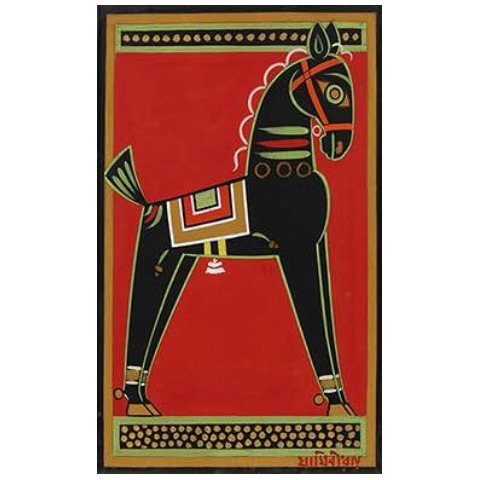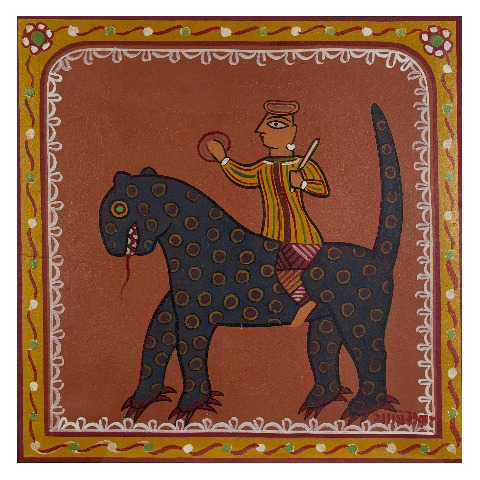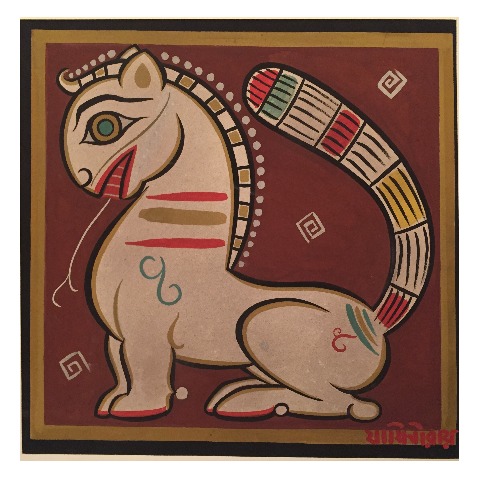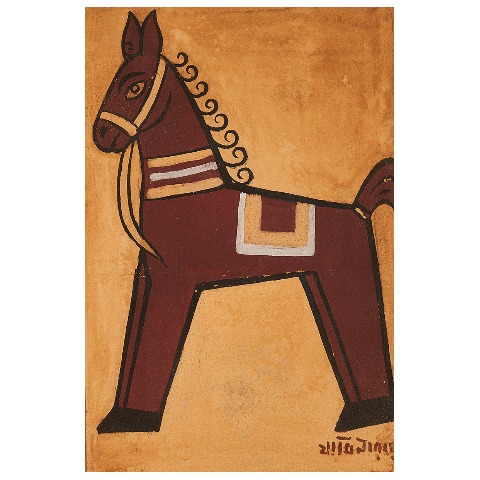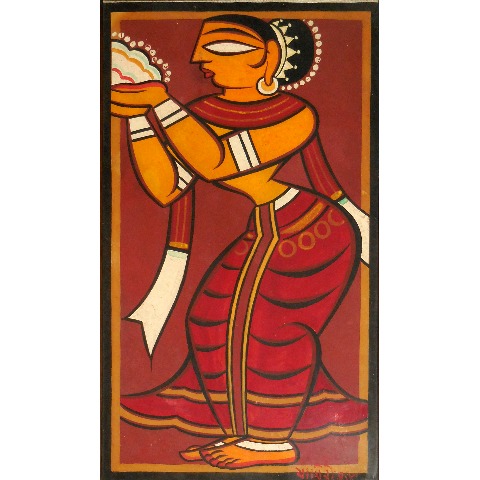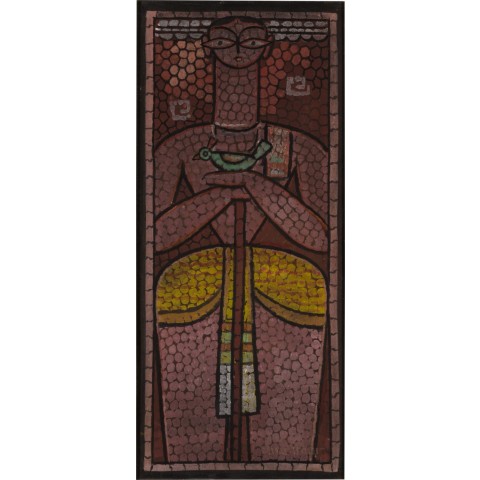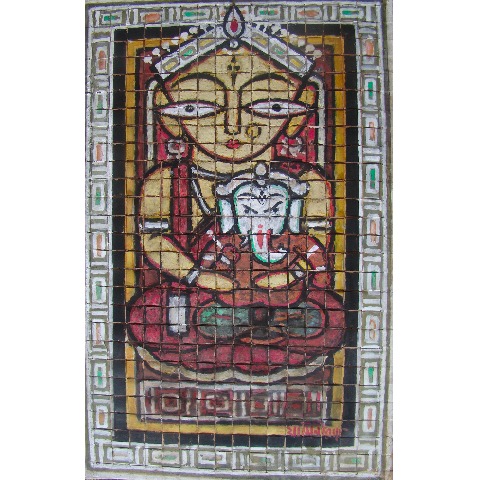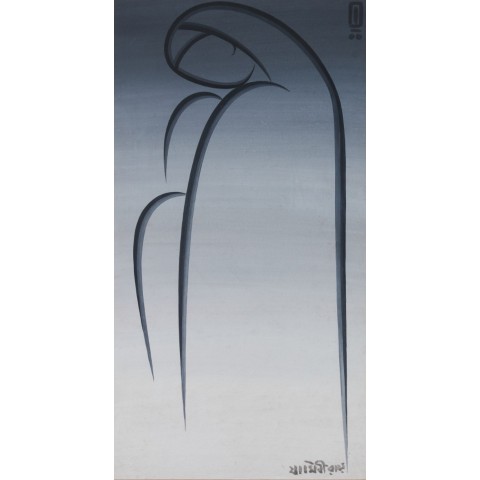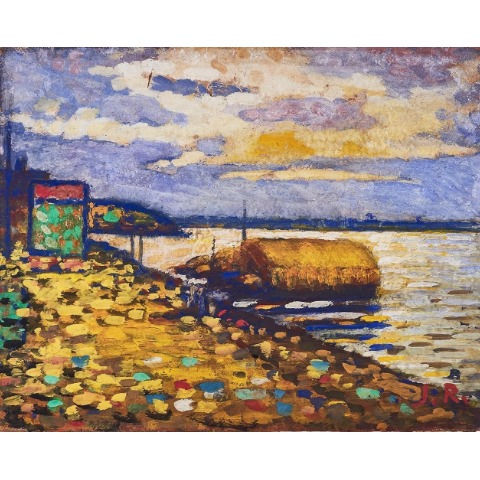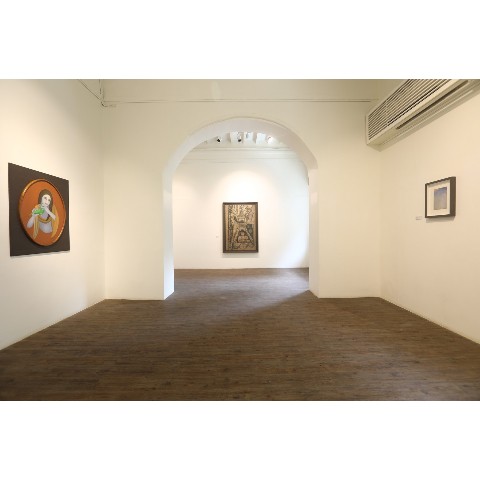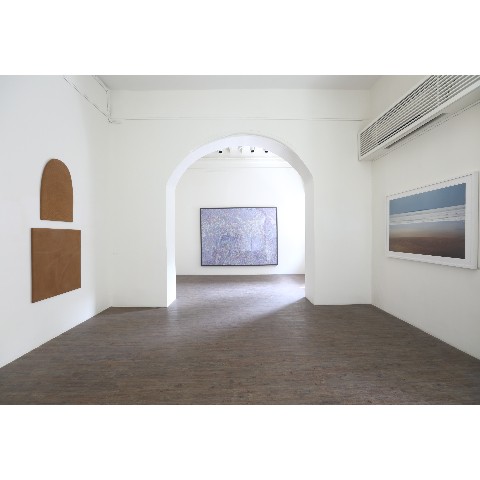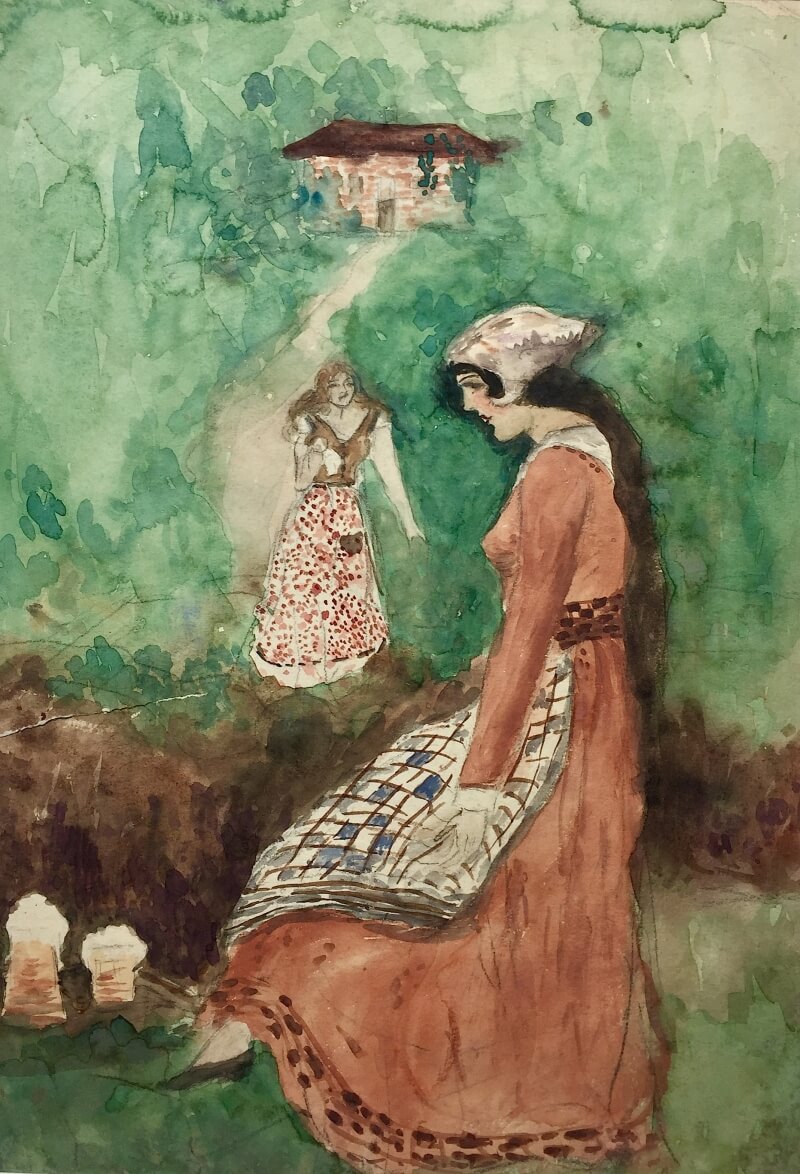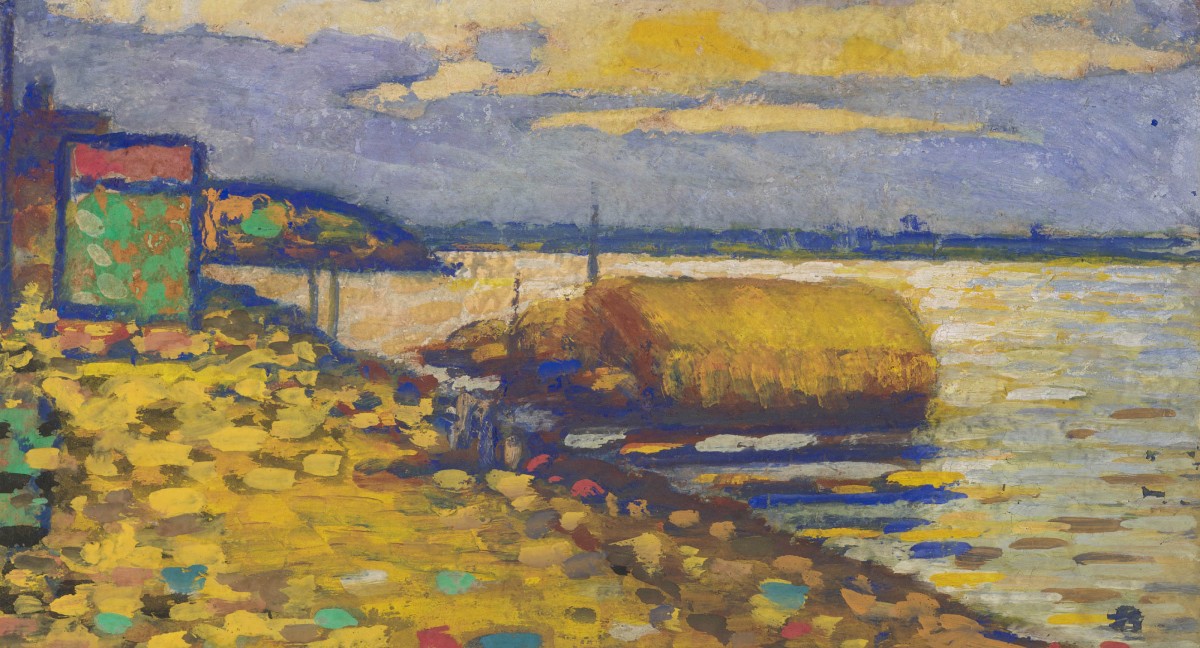
JAMINI ROY
Akara Modern
1887 -1972
Born in the
Bankura district, Jamini Roy was a graduate of the Government College of Art,
Kolkata, and was well-known as a skilled portraitist. As a pupil of
Abanindranath Tagore, (who was hailed as the creator of 'The Indian Society of
Oriental Art') Roy incorporated oriental-style elements into his earlier art.
Over time, he deviated from this style and studied the more indigenous visuals
like those from the Patua and Kalighat communities. He mainly used bold and
primary colours like red, yellow ochre, blue, and white to bring in the
versatility and emotion seen in traditional folk art. In the early 1930s, Roy
made a complete switch to indigenous materials to paint on woven mats, cloth,
and wood coated with lime.
Interestingly,
his inspiration for painting on woven mats came from the textures he found in
Byzantine art, which he had seen in coloured photographs. It was a fascinating
process for him to paint on a woven mat, fusing the mosaic-like surface with
his style of art. As a contemplative artist, his interest in folk art carried
deeper implications than merely formal or stylistic possibilities. He would
take up a subject and paint version after version, breaking and reforming the
theme.
Jamini Roy
was awarded the Viceroy’s Gold Medal in 1935, the Padma Bhushan in 1955, and
elected a fellow of the Lalit Kala Akademi the following year. Roy’s artwork
can be found in the collections of the Harn Museum of Art at the University of
Florida, the Victoria and Albert Museum in London, and the National Gallery of
Modern Art in New Delhi. His works are National Art Treasures and cannot be
exported.
